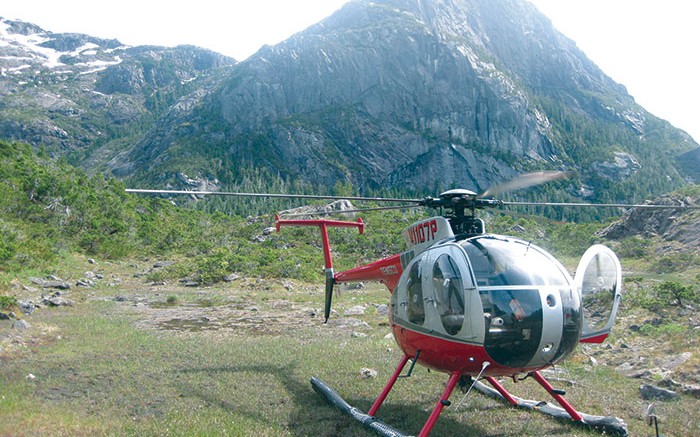Head of global research at Byron Capital Markets Jon Hykaway has raised his target price on Ucore Rare Metals (UCU-V, UURAF-O) to $1 per share — a 12-month estimate that he “still considers conservative” — after the company completed a preliminary economic assessment of the Dotson Ridge zone at its Bokan Mountain heavy rare earth property in southeastern Alaska.
The PEA estimates capital costs of US$221 million that include a complete, on-site rare earth oxide (REO) separation plant and a contingency provision of US$25 million — a price tag that president and chief executive Jim McKenzie calls among the lowest in the industry.
The downstream separation facilities “promise to render high-purity oxides both economically and on site,” McKenzie says.
The project is located on Prince of Wales Island, 60 km southwest of Ketchikan and 140 km northwest of Prince Rupert, B.C., and has direct ocean access to the western seaboard and the Pacific Rim, which bring some of the lowest shipping rates in the industry. It sits in the Tongass National Forest within an area set aside for natural resource development.
The PEA outlines an 11-year mine life, based on a 2011 inferred resource estimate of 5.3 million tonnes averaging 0.65% total rare earth oxides (TREO) at a cut-off grade of 0.4% TREO. (The deposit has been drilled to a 450-metre depth, and remains open along strike and at depth.) About 40% of the TREOs are heavy rare earth oxides.
The proposed mine will yield a pre-tax net present value of US$577 million at a 10% discount rate and a 43% internal rate of return.
Payback comes in 2.3 years at a mining rate of 1,500 tonnes per day and average total rare earth recoveries of 81.6%. The mine would produce an average 2,250 tonnes per year during its first five years of operation, including 95 tonnes of dysprosium oxide, 14 tonnes of terbium oxide and 515 tonnes of yttrium oxide.
Ucore plans to use dual energy X-ray transmission (DEXRT) sorting and magnetic separation. The mineralized material would be crushed and split into four sizes. The fines would bypass the sorters and each of the sizes would feed one of three sorters that use DEXRT, with the circuit rejecting 50% of the feed as waste. The concentrated mineralized material would be crushed further and ground in a rod mill. This material would later be processed by magnetic separators, which would reject another 50% of feed as waste.
Ucore estimates that 75% of non-rare earth element bearing material would be discarded through the physical beneficiation process. The remaining 375 tonnes per day of concentrated mineralized material would be further ground and fed to the leaching circuit. The company says the physical beneficiation circuit saves initial capital expenditure and operating costs.
Hykaway of Byron Capital Markets describes DEXRT as a technique “that passes X-rays of two different energies through ground particles of ore. By having detectors look at the difference in absorption of the two sources, it is possible to identify the particles containing large amounts of rare earth. Magnetic and DEXRT sorting combine to reduce ore volume by at least 50%.”
The leaching circuit consists of a nitric acid-leach process. The slurry is filtered and the solids are taken to the backfill plant to be put underground as cemented paste backfill. Before the solution continues to the separation circuit, it is treated by diffusion dialysis to recover the unconsumed nitric acid, which is recycled to the leach circuit.
The individual rare earth oxides are separated by solid-phase extraction (SPE). This technology was developed by Ucore and IntelliMet LLC in Montana. Hykaway describes SPE as a “highly modified form of ion exchange, which has previously been used in the rare earth element industry to ‘polish’ products and produce purified versions.”
The Toronto-based clean technologies and materials analyst explains that SPE turns the conventional ion-exchange bed into a porous solid. “While the cost per mass of media remains high,” he says in a research note, “the operating life is dramatically extended and the medium can be used under high pressures and flow rate, dramatically improving extraction rates.”
At press time in Toronto, Ucore was trading at 56¢ a share within a 52-week range of 21.5¢ to 64¢. The company has 153 million shares outstanding.


Be the first to comment on "Ucore finishes Dotson Ridge PEA"